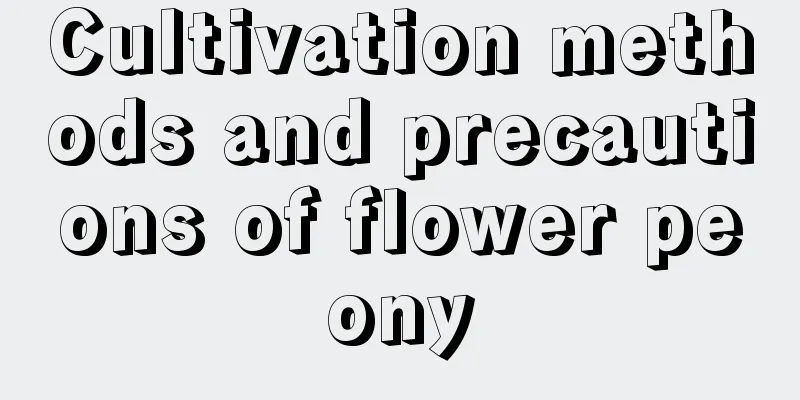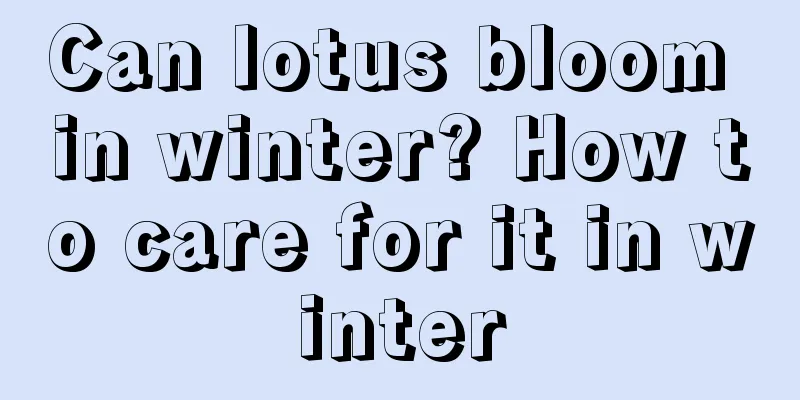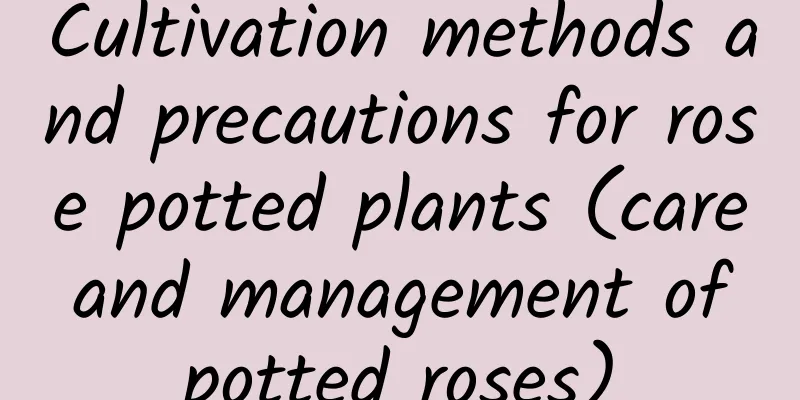Cultivation methods and precautions of flower peony

1. Maintenance methods1. Temperature: Judging from its origin and distribution area, it prefers higher temperatures, specifically between 20 and 32 degrees. If the temperature is too high, its leaves will easily wither, so it should not exceed thirty-five degrees. Some varieties have good cold resistance and can withstand temperatures as low as minus eight degrees Celsius, but some are also more afraid of the cold. 2. Light: Peonies love light very much, and only need shade when the light is too strong. Generally speaking, there is no need for shade except in summer. In summer, the light cannot be completely blocked, and the shading degree should be kept at around 50%. 3. Watering: Although peony likes moisture, it is also afraid of waterlogging. Therefore, it can be adjusted according to drought and flood conditions. During dry spells, water more often to keep the plants moist. But when there is a lot of rain, we must pay attention to drainage. 4. Fertilization: It has a longer flowering period and more leaves, so it requires more fertilizer. In addition to base fertilizer, try to use liquid fertilizer once or twice a month, especially during the flowering period. 2. Breeding techniques1. Repotting: Peonies grow faster during the growth period and consume more nutrients during flowering. Therefore, try to change the soil every year. Mountain soil can be used as the main matrix and mixed with materials such as sawdust. In addition, base fertilizer is still relatively important, and available ones include animal manure, cake fertilizer, etc. 2. Pruning: Peonies grow fast, so pruning is very important, and the plants are relatively resistant to pruning. Generally speaking, you can pinch off the tips of the flowers in spring to ensure more flowers bloom later. Before entering winter, it is best to prune, mainly cutting off old and dry branches and leaves. 3. Problem diagnosis and treatment1. Disease: There is "soot mold", which seriously affects the branches and leaves, especially the leaves, affecting their photosynthesis. Thiophanate can be used for prevention and treatment. There is also "anthracnose", which spreads very quickly and needs to be prevented and treated with Bordeaux in time. 2. Pests: Mainly "nematodes", which harm the roots. It is very important to disinfect the soil. IV. Other issues1. Flower language: The meaning of peony is good, including "humility", "virtue", "sincerity" and so on. 2. Can it be raised at home? Yes, it has a good ornamental effect. |
<<: Cultivation methods and precautions of Magnolia officinalis
>>: Cultivation methods and precautions of Dendrobium officinale
Recommend
When is the right season to repot azalea?
Rhododendron has a very high ornamental value, bu...
Can peonies be potted?
Can peonies be potted? Peonies can be grown in po...
Can I grow mugwort at home?
Can I grow mugwort at home? The plant mugwort can...
What are the cultivation methods and precautions of bamboo cypress?
Bamboo cypress cultivation method Bamboo cypress ...
How to prune the money tree
When to prune the money tree The pruning of money...
How to hydroponically cultivate dried azalea branches (home cultivation method for hydroponically cultivating azaleas)
How to hydroponically cultivate dry branch azalea...
What causes apricot tree leaves to turn yellow?
Apricot trees are one of the most widely planted ...
How does Chiyoda pine produce side buds? No worries with this approach!
Suitable for side bud bursting method 1. Remove t...
Disease and Pest Control of Meiguanlan
Scaly mushroom They usually appear on the surface...
When can I change the soil for Clivia?
Time to change the soil of Clivia Basically, for ...
How long is the growth cycle of tea leaves?
Introduction to Tea Growth The terrain for tea tr...
Six trees that protect your home and bring wealth
1. Pomegranate Tree The pomegranate tree is a ver...
How to tell if the roots of Haworthia striata are rotten
Why rot? The invasion of malignant bacteria is on...
Paphiopedilum cultivation methods and precautions
1. Matrix Most Paphiopedilums are terrestrial or ...
Free range chicken farming
Raising free-range chickens is an eco-friendly fa...









